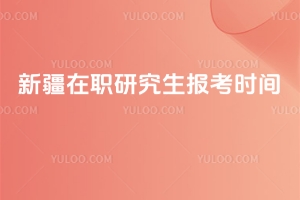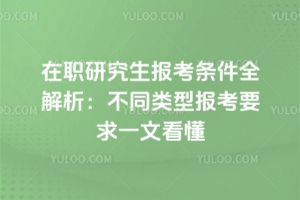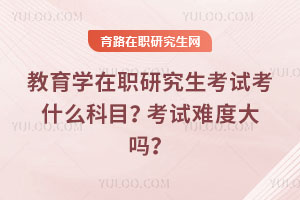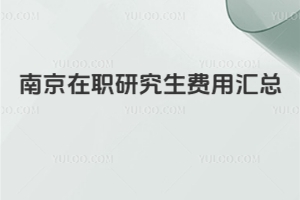- 微信公眾號(hào)

政策解讀
- 微信小程序

快速擇校

政策解讀

快速擇校
隨著2012年GCT考試的臨近,我們特整理今年GCT英語(yǔ)閱讀精煉題,供考生參考與學(xué)習(xí)。希望能對(duì)廣大考生有所幫助。
of the tens of thousands of ships on the ocean bottom, only a handful, less than1 percent, contain negotiable treasure, such as gold and jewels. most give us a different, priceless treasure — history. a SUNken ship lies in trust, preserved in the airless environment of the sea, and those in deep water are especially well protected. no dry land sites anywhere — except perhaps egyptian tombs — are in a better state of preservation than a vessel deep in the ocean. a sunken ship, therefore, can be a rare window through which a moment in time is glimpsed.
this is not to imply that sunken ships are always found intact. most ships break up on the way down, hit the bottom at about 100 miles per hour, and BECome a chaotic, confusing jumble (混亂的一堆). i recall the chagrin (懊惱) of a novice diver who , after surfacing from an underwater tour of a 400-foot ship, asked his diving buddy. “where was the wreck?” it takes experience to actually know sunken ship when one sees it.
but no matter what its condition on the way down, a ship deteriorates much more slowly as it sinks deeper into protective layer of sand and mud. ancient vessels have been found in remarkably good condition. in 1997 a group of marine archaeologists excavating (發(fā)掘) a 900-year-old wreck recovered engraved glassware, greek coins, bronze kettles, and amazingly, greek jars containing seeds, almonds, and lentile — even a plate with chicken bones.
1. which of the following is meant by the “priceless treasure” mentioned in line 2?
A. valuable information. B. ancient coins.
C. precious stones. D. old books.
2.the author compares a sunken ship preserved in the deep sea to which of the following?
A. a tomb in egypt. B. a greek jar.
C. a vacuum. D. a bronze chest.
3. according to the passage, which of the following usually happens to a ship as it sinks?
A. it remains in an upright position.
B. it gets transported by the currents.
C. it breaks into pieces.
D. it attracts marine life.
4. which of the following objects found on the 900-year-old wreck most surprised the author?
A. money. B. jars. C. chicken bones. D. glassware.
5.which of the following features of an ancient ship is of most interest to the author?
A. speed. B. contents. C. location. D. design.
報(bào)考:♦2012在職聯(lián)考政策調(diào)整 常見(jiàn)問(wèn)題 報(bào)考條件 ♦考試科目及時(shí)間安排
備考:♦在職聯(lián)考?xì)v年真題 ♦GCT復(fù)習(xí)規(guī)劃 ♦英語(yǔ)大綱及試題結(jié)構(gòu)♦備考技巧
輔導(dǎo):♦環(huán)球10月聯(lián)考輔導(dǎo) ♦學(xué)苑教育10月聯(lián)考輔導(dǎo)班 ♦北大MPA培訓(xùn)
特別聲明:①凡本網(wǎng)注明稿件來(lái)源為"原創(chuàng)"的,轉(zhuǎn)載必須注明"稿件來(lái)源:育路網(wǎng)",違者將依法追究責(zé)任;
②部分稿件來(lái)源于網(wǎng)絡(luò),如有侵權(quán),請(qǐng)聯(lián)系我們溝通解決。

法學(xué)在職研究生備考攻略:非全日制研究生需參加全國(guó)統(tǒng)考,前期要明確目標(biāo)院校與專業(yè),拆解考試科目;分基儲(chǔ)強(qiáng)化、沖刺階段復(fù)習(xí),分別聚焦搭建知識(shí)框架、歸納命題規(guī)律及模擬...

新疆在職研究生報(bào)考類型新疆在職研究生主要有兩種類型,報(bào)考時(shí)間差異大,是理解“新疆在職研究生報(bào)考時(shí)間”的基礎(chǔ):同等學(xué)力申碩

會(huì)計(jì)學(xué)在職研究生是否考英語(yǔ)二,取決于報(bào)考方式。同等學(xué)力申碩入學(xué)無(wú)考試,申碩考試中英語(yǔ)是可選語(yǔ)種;非全日制研究生會(huì)計(jì)專碩必考英語(yǔ)二。此外,近年會(huì)計(jì)專碩國(guó)家線中英語(yǔ)...

在職研究生報(bào)考條件因報(bào)考類型不同而存在差異。非全日制研究生一般要求本科畢業(yè)或?qū)?飘厴I(yè)滿2年;同等學(xué)力申碩入學(xué)需具備大專及以上學(xué)歷,申碩則需本科畢業(yè)滿3年且有學(xué)位...

教育學(xué)在職研究生考試考什么科目?主要通過(guò)同等學(xué)力和專業(yè)碩士招生。同等學(xué)力申碩考外國(guó)語(yǔ)和學(xué)科綜合,外國(guó)語(yǔ)有口語(yǔ)交際等題型,學(xué)科綜合含主客觀題。專業(yè)碩士先參加全國(guó)聯(lián)...

南京在職研究生報(bào)考類型在職人士報(bào)考南京在職研究生,主要有同等學(xué)力申碩和非全日制研究生兩種途徑。不同類型在報(bào)考要求、費(fèi)用模
在職研究生
入學(xué)考試
在職研究生
有用嗎
在職研究生
如何報(bào)考
在職研究生
報(bào)考流程
在職研究生
報(bào)名條件
在職研究生
學(xué)費(fèi)一覽表
在職研究生
考哪些科目
在職研究生
怎么報(bào)名
在職研究生
一年考幾次
評(píng)論0
“無(wú)需登錄,可直接評(píng)論...”